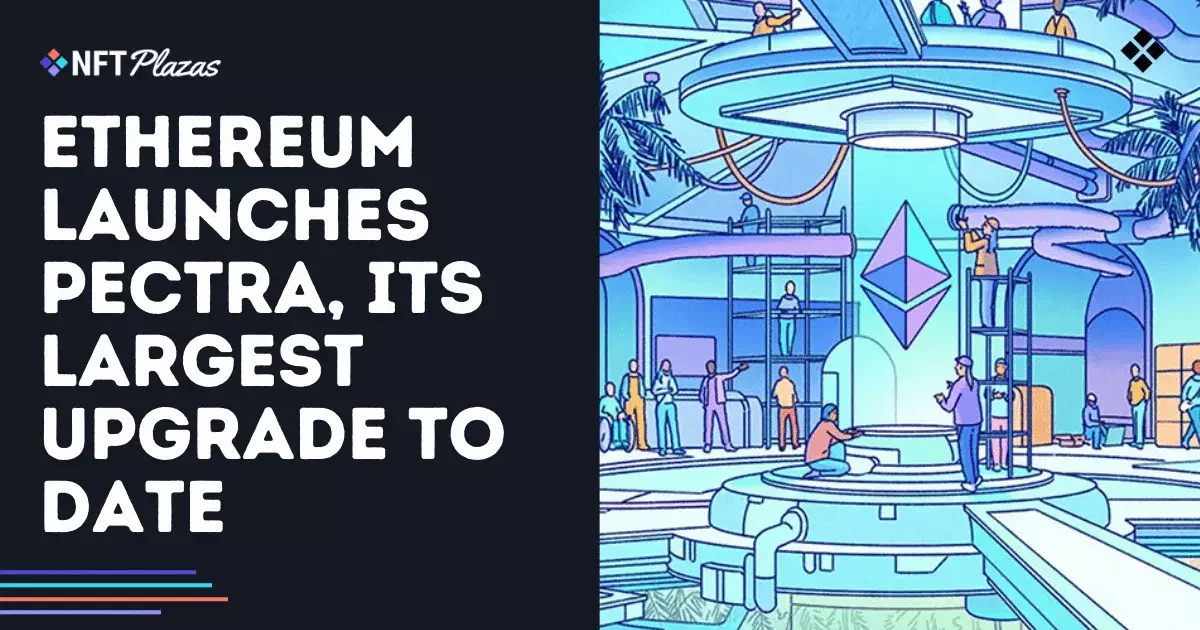Throughout the past few years, the world of blockchain technology has witnessed significant transformations, some of which have managed to capture the collective imagination of developers and investors alike. The recent upgrade of Ethereum, labeled Pectra, constitutes a pivotal step in refining the platform, yet it’s essential to dissect whether this adjustment truly meets the growing demands of the ever-evolving digital landscape or merely serves as a temporary fix to an underlying issue.
Pectra: An Overview of Innovations
The Pectra upgrade, which followed closely on the heels of Ethereum’s previous major update known as Dencun, introduces a host of changes designed to optimize how the network handles accounts, data processing, and validator staking. At first glance, these adjustments may appear technical and unexciting, but they hold profound implications for numerous stakeholders within the Ethereum ecosystem, particularly those developing decentralized applications and Layer 2 networks.
One of the significant alterations this upgrade encompasses is the implementation of several Ethereum Improvement Proposals (EIPs). For instance, EIP-7702 allows standard user accounts to exhibit smart contract-like behavior temporarily, enhancing user functionality without necessitating a shift to a new address format. This is undoubtedly a promising leap in the quest for greater user-friendliness, yet one must question whether these enhancements amount to a definitive long-term strategy or are simply an effort to keep pace with competitors.
Validator Staking: Consolidation Challenge
Moreover, the initiative to raise the maximum stake per validator from 32 ETH to 2,048 ETH through EIP-7251 exemplifies Ethereum’s endeavor to streamline validator operations. While the move aims to reduce overhead for larger validators and improve staking efficiency, it is imperative to scrutinize the implications of such consolidation. Will this lead to a centralized validator pool, which contradicts the decentralized ethos of blockchain technology? As the average punter might find it increasingly challenging to compete against well-resourced entities, the essence of Ethereum as a decentralized platform could be undermined.
The economic pressures inherent in this shift underscore a concerning trend. By favoring larger validators, Ethereum runs the risk of alienating the small players, who often contribute to the network’s diversity and resilience. Consolidation, while efficient in a vacuum, could inadvertently hinder innovation and maintain the status quo, retarding the very advancements that blockchain technology promises.
A Scaling Strategy or a Band-Aid Solution?
Pectra’s exploration of a broader data capacity through EIP-7691, which increases the number of data blobs from three to six per block, undoubtedly targets the rising demand from Layer 2 scaling solutions seeking to lower transaction costs. However, even as Ethereum expands its data availability, practitioners are wary. The future of decentralized technologies is contingent on consistently accommodating their growth, and industry experts argue that mere increases in blob capacity may not suffice in the long run.
What Ethereum truly needs is a comprehensive plan that addresses scalability and operational requirements head-on. The message appears clear: while upgrades like Pectra are steps in the right direction, they must ultimately be part of a more extensive vision to ensure the network can thrive amidst escalating demands. The developers must grapple with the increasingly sophisticated needs of users and take bold action rather than treading cautiously.
The Road Ahead: Balancing Innovation and Decentralization
As developers turn their attention toward the next upgrade, dubbed Fusaka, the aim remains to enhance data availability further. Introducing features like PeerDAS may provide some relief, but the underlying problem of ensuring rapid scalability without compromising decentralization looms large. Balancing these competing priorities will pose one of the most significant challenges for Ethereum’s future trajectory.
In shaping Ethereum’s future amid these escalating demands, stakeholders must not overlook the fundamental principles defining blockchain technology: decentralization, accessibility, and innovation. As the platform stands on the precipice of change, it is crucial to remember that hollow upgrades will not suffice. A robust return to fundamental values and a commitment to genuine, meaningful innovation will determine whether Ethereum’s next chapter is one of triumph or merely a continuation of a precarious balancing act.
















Leave a Reply